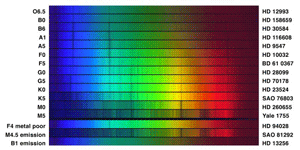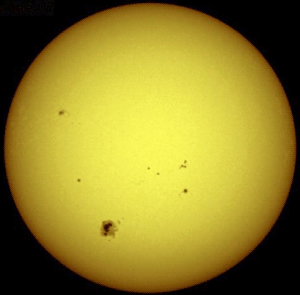The birth of Strömgren-photometry and atmosphere models
Early in his career, Bengt Strömgren laid out a large and ambitious program for the investigation of stars in the Milky Way and he was called embodiment of the development of astrophysics through almost a hundred years.
His development of methods for the study of the Milky Way and galaxy´s stars has played an enormous role in the methods in astrophysics, not the least through the so-called photoelectric photometry.
Astrometry with an 'artificial eye'
From a very young age Bengt Strömgren worked with the photoelectric registration of stellar passages with the help of a photoelectric cell and in the first half of the 20th century the photographic plate was astronomy's most dominant form of detection, which had a number of limitations on precision.
After World War II the so-called photomultiplier became available. It was much more sensitive than the plates and Strömgren soon began his work with photomultipliers.
Hydrogen and the classification of stars
Strömgren's previous work with models of stellar atmospheres had convinced him that he could speak positively about the temperature and the gravity of the stellar atmospheres using the criteria for the abundance of hydrogen in stars. In that way he could classify many different types of stars and with that better understand their evolution.

The importance of photometry for the understanding of the Milky Way
When the light from a star tells something about the surface temperature and chemical composition, the Harvard system divides the stars into different light classes (spectral classes) which when sorted after decreasing temperature are: After Strömgren left his post as the director of the Yerkes Observatory in 1957 - in favour of a professorship at Princeton - he began to develop the widespread "medium-band", the so-called uvby system, which was later improved upon.
This four-colour system is much used and the system has been nicknamed Strömgren photometry. The system has proven to be completely indispensible for understanding of the composition of stars, their structure and evolution - and with that the story of the entire galaxy, which is what Bengt Strömgren had planned to uncover.
O, B, A, F, G, K, M, R, N, S.
The hottest stars are first and the coldest last. The Sun is a G-type.

Normally "photometry" indicates measurements over a broad "band" of wavelengths. Today there are several hundred photometric systems and Bengt Strömgren's five-colour system, the so-called uvby-system (plus a beta-filter), is a very widespread system and is used to classify star types.
Astronomical photometry is a method for analysing stellar light with the help of a photoelectric cell - rather than the human eye - and was introduced early in the 20th century. It is a technique which measures the intensity of a celestial body's electromagnetic radiation.
